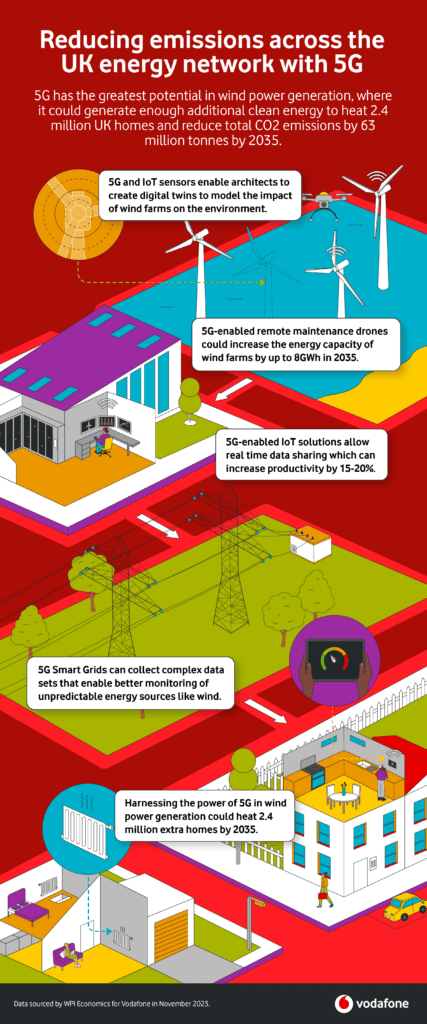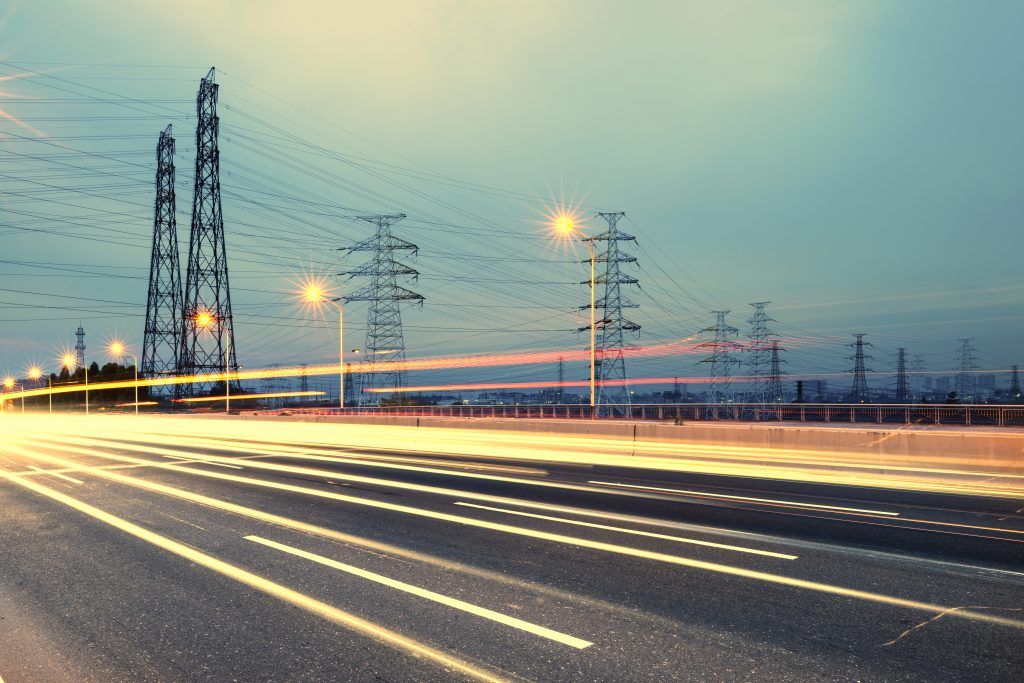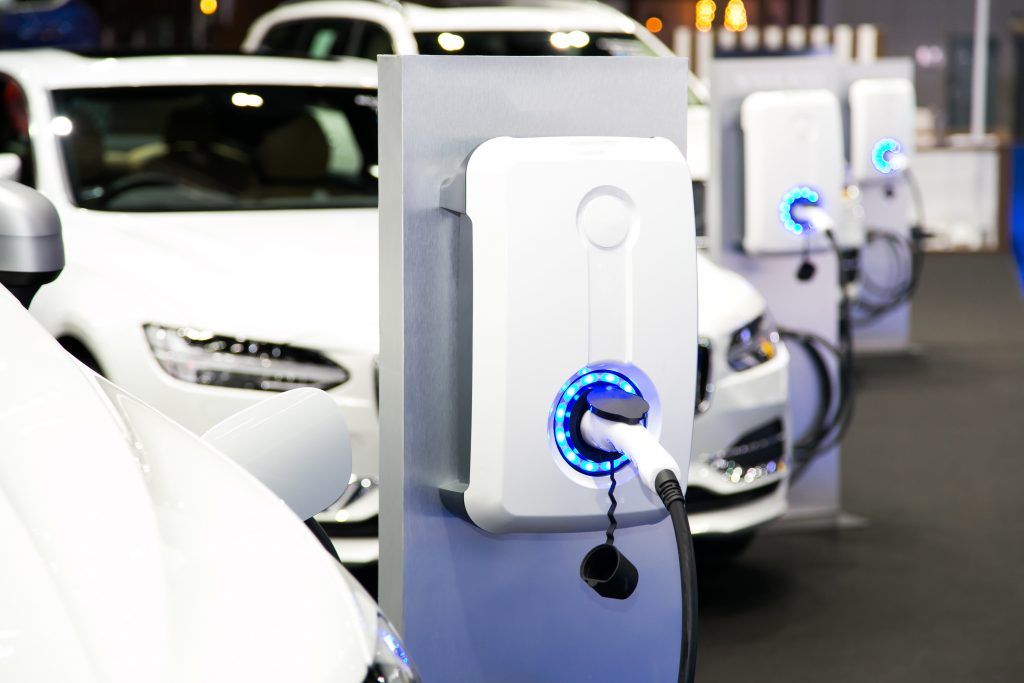5G-enabled technologies could help deliver huge emissions savings which could accelerate the UK’s renewable energy transition, according to new economic modelling.
The modelling reinforces the environmental benefits of 5G Standalone (5G SA), particularly when it comes to making the UK’s renewable energy production and distribution network more efficient to further reduce reliance on natural gas or coal powered generation.
The research indicated that across renewables, wind power generation gains the greatest benefit from 5G technology, particularly through drones, sensors and remote monitoring systems to drive infrastructure efficiencies from the wind farm, right through to homes.
However, these efficiencies can only be achieved with the timely rollout of a 5G SA network. That is why, following completion of the proposed joint venture, Vodafone UK and Three UK have committed to investing £11 billion in the first 10 years as a combined business which will help deliver 99% of 5G Standalone population coverage by 2034.
This critical infrastructure will deliver a superior network that will allow the firms to build towards the UK’s digital future, faster and facilitate the innovations needed to support the UK towards its Net Zero journey.
The modelling conducted by WPI Economics for Vodafone reveals that harnessing the power of 5G in wind power generation could reduce total CO2e emissions by 63 million tonnes, the equivalent to taking 700,000 petrol cars off the road by 2035.
This is enabled by technology such as:
• 5G remote maintenance drones which could increase the energy capacity of wind farms by 8GWh by 2035, providing a much-needed solution for wind turbines that are often prone to failure. Over time, this could translate into an additional 27 TWh of energy output. When considered alongside the UK’s annual electricity consumption of 320.7 TWh in 2022, this additional output would be a significant stride forward in renewable energy generation.
• 5G-enabled Internet-of-Things (IoT) solutions which take advantage of 5G SA’s low latency for real-time monitoring of wind farms to ensure operations can run smoothly. IoT and machine learning can also optimise the angle of each turbine, enabling them to stand closer together, which could lead to a 30-68% improvement in the wind farms’ capacity.
• 5G smart grids which use IoT to collect complex data-sets like wind speed, temperature and power output and effectively share real-time information that enables more effective monitoring of the grid, with millisecond-level precision – extremely important because of the variable nature of wind-generated energy, which can place significant, unpredictable demand on the network.
Andrea Dona, Chief Network Officer, Vodafone UK, said: “Making the switch to renewable energy is fundamental in the UK’s Net Zero journey and I’m excited about the role 5G Standalone can play in accelerating this transition. 5G SA is critical in making renewable energy outputs more reliable, efficient and boosting capacity. This makes the need for a faster 5G rollout even more important.
”As a combined business with Three UK, when the proposed joint venture completes, we will be committed to helping the UK deliver on its climate ambitions by investing £11bn over the next decade in rolling out Standalone 5G across the UK, reaching over 99% of the UK population by 2034 and helping the UK’s energy industry decarbonise sooner.”
Yusuf Patel, Chief Technical Officer, EDF Renewables UK and Ireland said “We welcome the findings from Vodafone’s research that highlights the importance of 5G technology in facilitating the innovations needed to support the UK on its Net Zero journey. It is clear that by working together we can build a lower carbon future and confirm the UK’s place as a global leader in decarbonisation.”

In June, Vodafone launched the UK’s first Standalone network, 5G Ultra, creating one of the most technologically advanced network for customers.
The estimated figures are based on analysis by WPI Economics using trusted data sources, including data from the Department for Energy Security & Net Zero, Department for Transport and the ONS, as well as academic literature. Overall benefits are calculated based on a Theory of Change flow, which breaks down the total effect into discrete effect channels identified through a literature review. Benefits coming from each channel are estimated and summed together (where applicable). The analysis presents emissions avoided between 2024 and 2035, assuming a staggered implementation of 5G-enabled solutions over time. The estimates are based on official government projections of CO2e emissions by industry, and the projected changes in sources of energy generation.
Image courtesy of Shutterstock.








